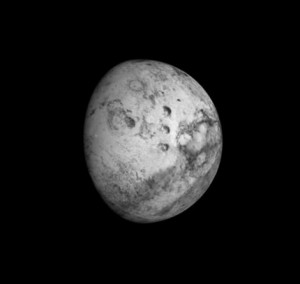https://en.wikipedia.org/wiki/Grok wrote:
<<
Grok is a neologism coined by American writer Robert A. Heinlein for his 1961 science fiction novel Stranger in a Strange Land. While the Oxford English Dictionary summarizes the meaning of grok as "
to understand intuitively or by empathy, to establish rapport with" and "
to empathize or communicate sympathetically (with); also, to experience enjoyment", Heinlein's concept is far more nuanced, with critic Istvan Csicsery-Ronay Jr. observing that "the book's major theme can be seen as an extended definition of the term". The concept of grok garnered significant critical scrutiny in the years after the book's initial publication. The term and aspects of the underlying concept have become part of communities as diverse as polyamory (in particular the Church of All Worlds) and computer science.
Critic David E. Wright Sr. points out that in the 1991 "uncut" edition of Stranger, the word grok "was used first without any explicit definition on page 22" and continued to be used without being explicitly defined until page 253 (emphasis in original). He notes that this first intensional definition is simply "to drink", but that this is only a metaphor "much as English 'I see' often means the same as 'I understand'". Critics have bridged this absence of explicit definition by citing passages from Stranger that illustrate the term. A selection of these passages follows:
Grok means "to understand," of course, but Dr. Mahmoud, who might be termed the leading Terran expert on Martians, explains that it also means, "to drink" and "a hundred other English words, words which we think of as antithetical concepts. 'Grok' means all of these. It means 'fear,' it means 'love,' it means 'hate'—proper hate, for by the Martian 'map' you cannot hate anything unless you grok it, understand it so thoroughly that you merge with it and it merges with you—then you can hate it. By hating yourself. But this implies that you love it, too, and cherish it and would not have it otherwise. Then you can hate—and (I think) Martian hate is an emotion so black that the nearest human equivalent could only be called mild distaste.
'Grok' means 'identically equal.' The human cliché 'This hurts me worse than it does you' has a distinctly Martian flavor. The Martian seems to know instinctively what we learned painfully from modern physics, that observer acts with observed through the process of observation. 'Grok' means to understand so thoroughly that the observer becomes a part of the observed—to merge, blend, intermarry, lose identity in group experience. It means almost everything that we mean by religion, philosophy, and science and it means as little to us as color does to a blind man."
The Martian Race had encountered the people of the fifth planet, grokked them completely, and had taken action; asteroid ruins were all that remained, save that the Martians continued to praise and cherish the people they had destroyed."
All that groks is God."
Robert A. Heinlein originally coined the term grok in his 1961 novel Stranger in a Strange Land as a Martian word that could not be defined in Earthling terms, but can be associated with various literal meanings such as "water", "to drink", "life", or "to live", and had a much more profound figurative meaning that is hard for terrestrial culture to understand because of its assumption of a singular reality.
According to the book, drinking water is a central focus on Mars, where it is scarce. Martians use the merging of their bodies with water as a simple example or symbol of how two entities can combine to create a new reality greater than the sum of its parts. The water becomes part of the drinker, and the drinker part of the water. Both grok each other. Things that once had separate realities become entangled in the same experiences, goals, history, and purpose. Within the book, the statement of divine immanence verbalized between the main characters, "Thou Art God", is logically derived from the concept inherent in the term grok.
Heinlein describes Martian words as "guttural" and "jarring". Martian speech is described as sounding "like a bullfrog fighting a cat". Accordingly, grok is generally pronounced as a guttural gr terminated by a sharp k with very little or no vowel sound.>>
 Mars at the Moon's Edge
Mars at the Moon's Edge

